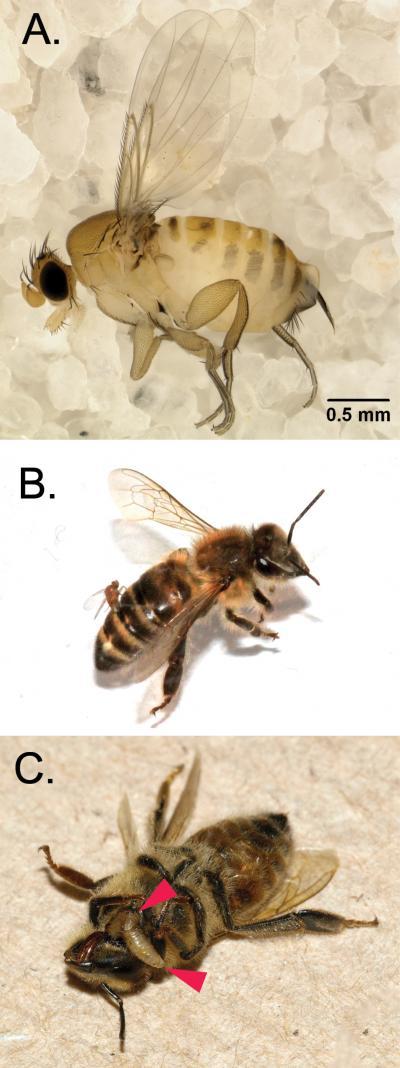Jan. 2, 2012 – A paper to be published on January 3, 2012 in the authoritative magazine PLoS ONE, co-authored by NHM entomologist Dr. Brian Brown, reveals a new threat to honey bees and perhaps, a partial explanation for the bees' well-publicized Colony Collapse Disorder (CCD), a syndrome characterized by worker bees abandoning their hive. The threat is the tiny but dangerous phorid fly, which may pose an emerging threat to North American beekeeping.
The honey bee Apis mellifera has experienced recent unexplained die-offs around the world. Although catastrophic losses of honey bee colonies have occurred in the past, the magnitude and speed of recent hive losses appear unprecedented. So far, the main causal suspects have been parasitic mites, fungal parasites, viral diseases and interactions amongst them.
In this paper, the authors provide the first documentation that the phorid fly Apocephalus borealis, previously known to only parasitize bumble bees, also infects and eventually kills honey bees — by leading them to abandon their hives at night.

These are images of Apocephalus borealis and honey bees. (A) Adult female A. borealis. (B) Female A. borealis ovipositing into the abdomen of a worker honey bee. (C) Two final larvae of A. borealis exiting a honey bee worker at the junction of the head and thorax (red arrows).
(Photo Credit: Natural History Museum of Los Angeles County)
Brown is a world authority on phorid flies, and blogs about the weird creatures at http://flyobsession.net. He has received reports of nighttime bee activity in Los Angeles. "It seems to be concentrated near the coast," he said, "which is where our collecting has also encountered the flies."
The authors prove that parasitized honey bees show hive abandonment behavior, leaving their hives at night and dying shortly thereafter. On average, seven days later, up to 13 phorid larvae emerge from each dead bee and pupate away from the bee. Using DNA barcoding, the authors confirmed that phorids that emerged from honey bees and bumble bees were the same species.
Understanding details of phorid infection may shed light on similar hive abandonment behaviors seen in CCD. Further, knowledge of this parasite could help prevent its spread into regions of the world where naïve hosts may be easily susceptible to attack.